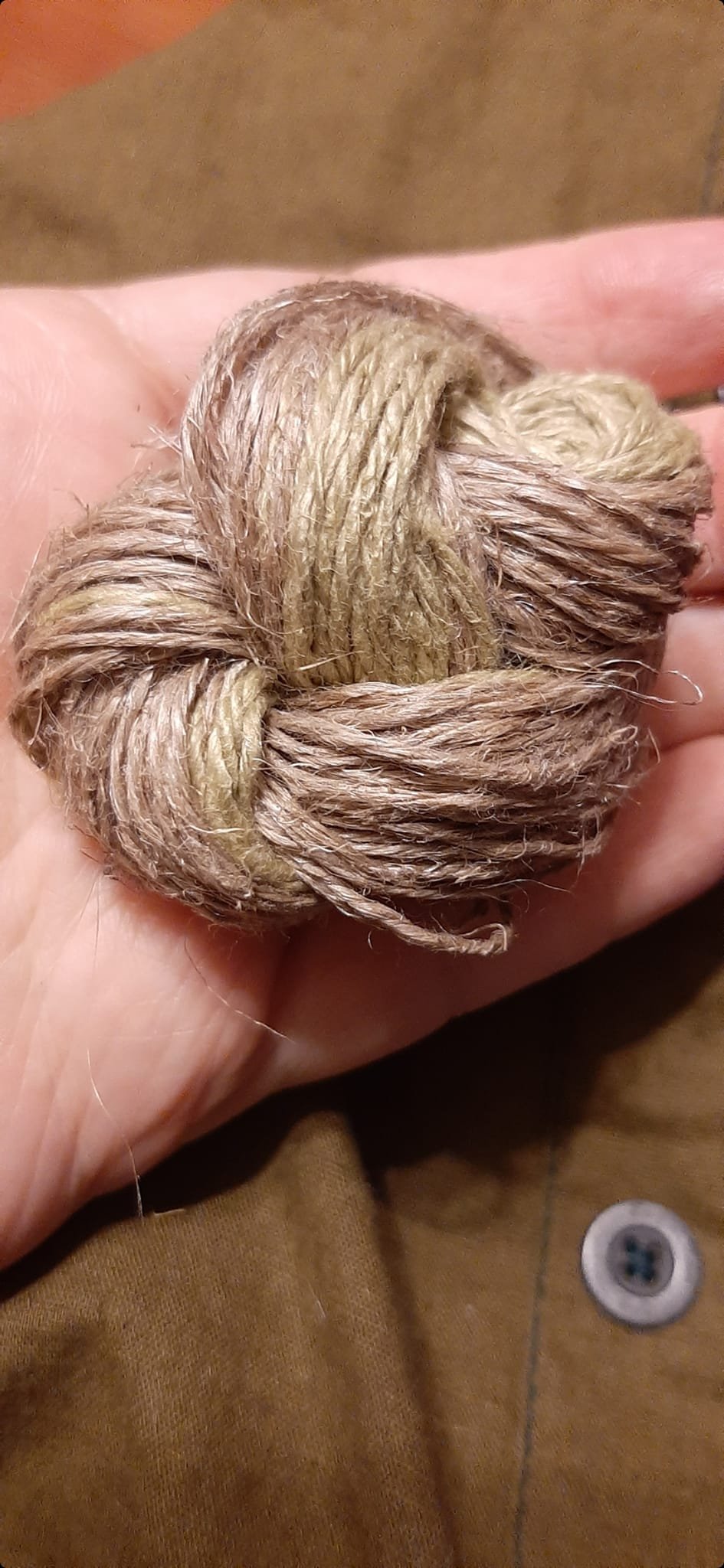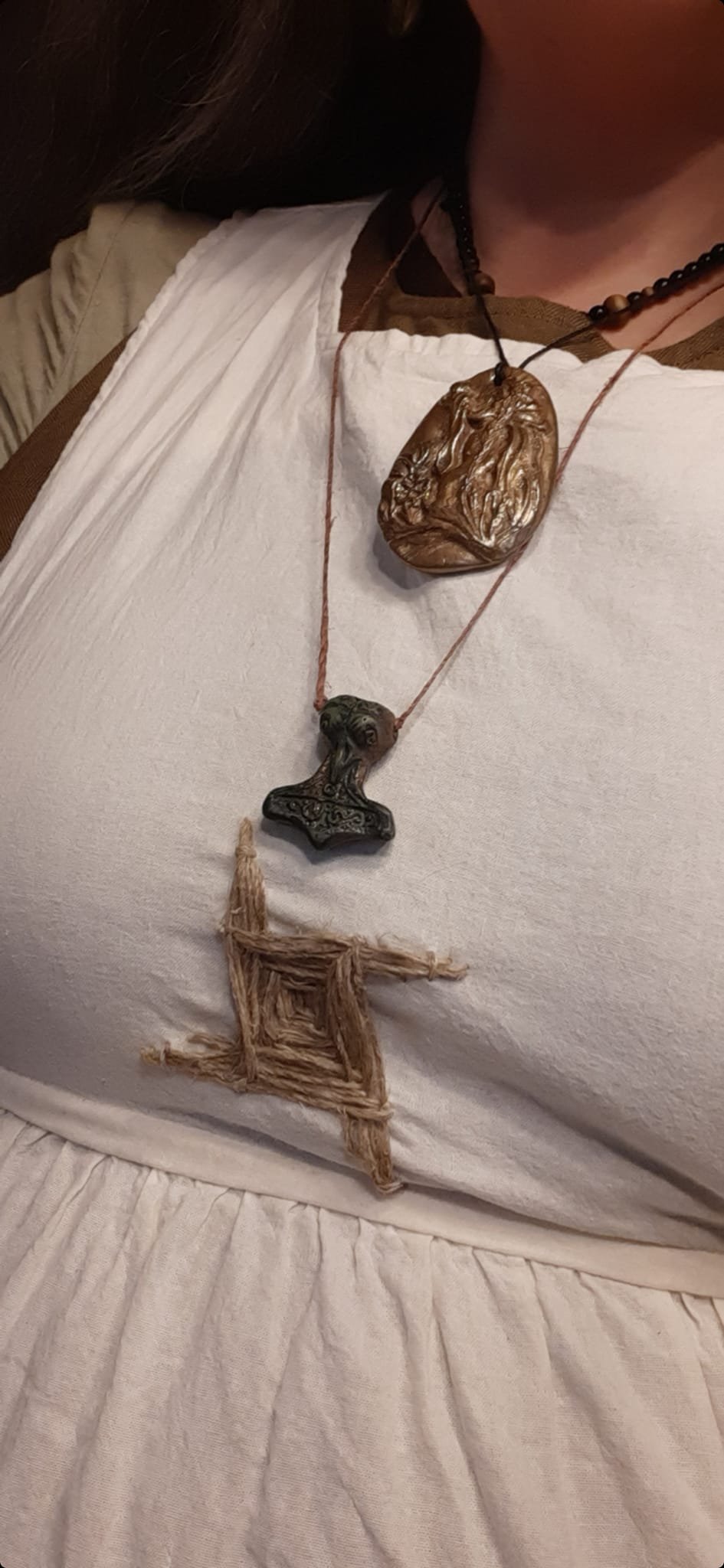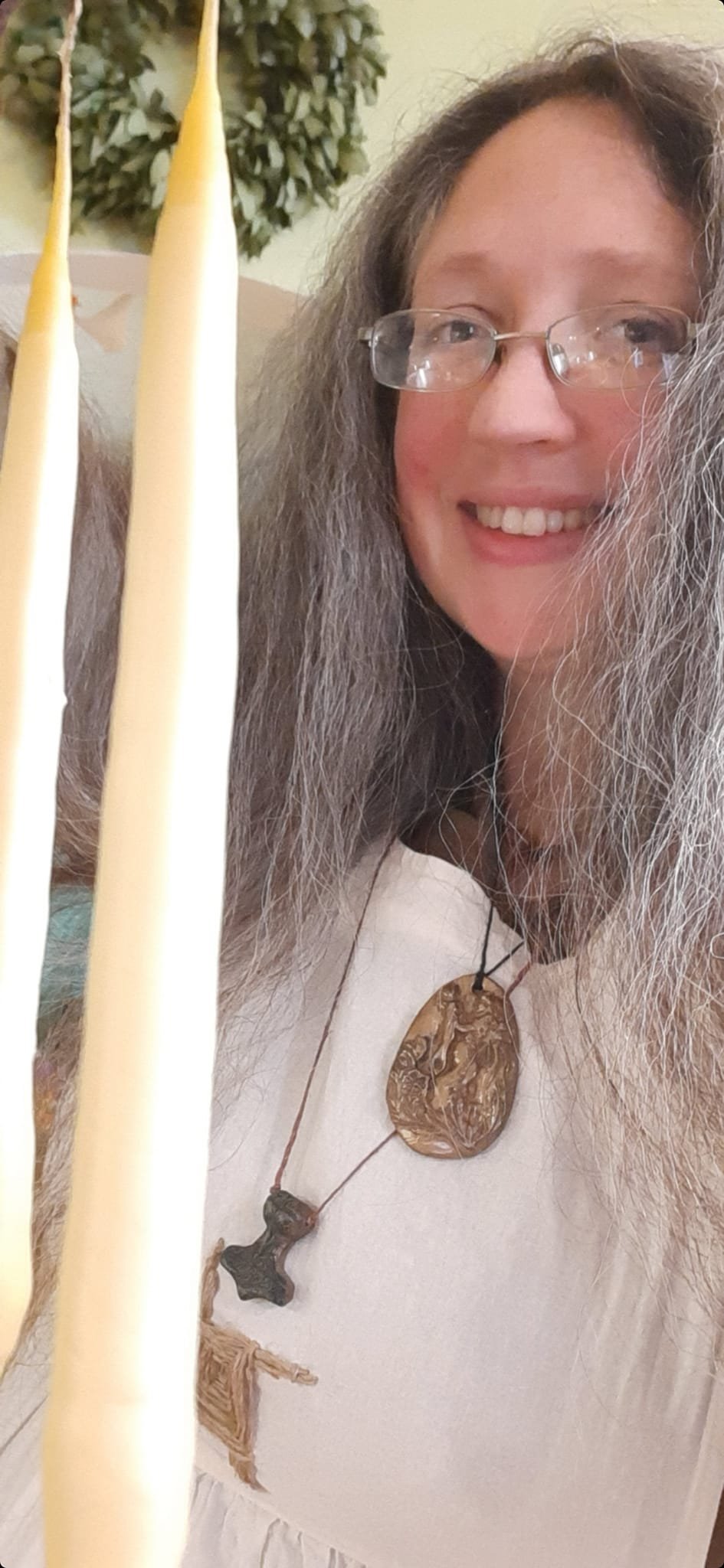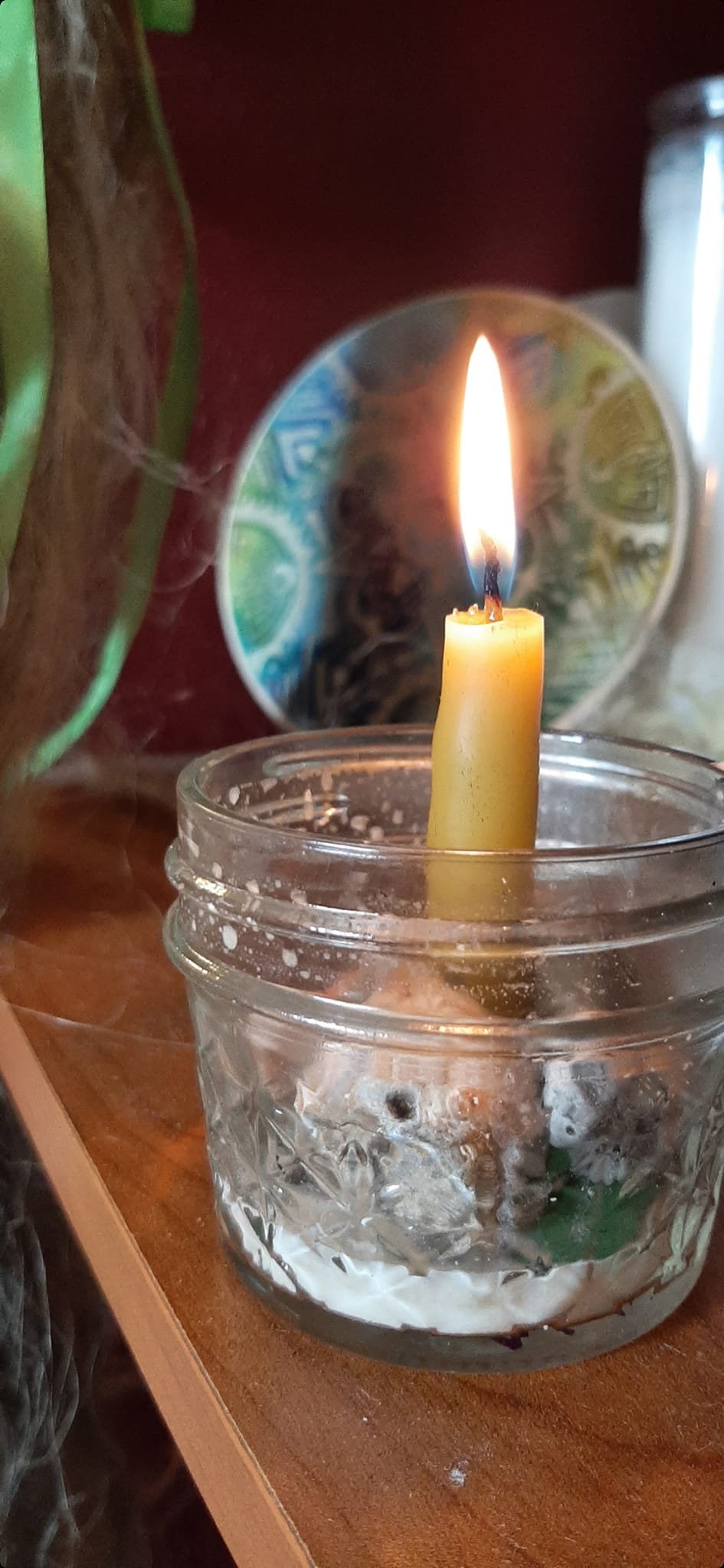Exploring the past to find fuel for the future
As February begins this year, I find myself thinking again of renewals. Happily, this is a great time for such thoughts. Imbolc (or Oimelc, Candlemas, St Brigid’s Day, Groundhog Day, etc) is a time for using up leftover odds and ends while preparing the way for the seasons to come. Although here in the American Midwest we’ve had precious little deep winter, spring will be here soon. No matter how long a winter may seem, spring is inexorable. Here and now, I am looking out over a blanket of snow, but it’ll only be a few weeks before we see the first of the spring bulbs flowering. While some traditions head straight into spring and others include preparing to make it through the remainder of a long winter, all of the traditions of these early February observances are about looking toward warmer, brighter days to come.
Even in sub-zero weather with half a foot of snow on the ground, we are reminded that we carry within us the fire and life of archetypal characters like Brigid. When we call on the fire bearers to light our way, we are naturally calling forth both the fire that we carry within ourselves and the fire that connects us to everything around us. Brigid, as a triple figure of poetic creativity, the art of blacksmithing, and growthful healing, is perfectly situated to provide inspiration in this moment of the year. She is often depicted as pregnant and carries the spark of life wherever she goes. This spark comes through in artistic inspiration, manual labor, the germination of new projects, and sometimes as literal fire. When it comes to Imbolc this year, I’m going with all of the above.
With the help of a dear friend, I’ve recently gotten back to candle making for Imbolc. Last year was my first experience making dipped candles, and it was a delightful opportunity to slow down and enjoy the process. As with working with clay and fiber, manipulating the wax is a bit of a negotiation with the material. I had to get to know its characteristics in order to get a feel for how quickly to move, how long to wait between dips, and how much I could add each time around.
Signs of Spring
Snowdrops and Brigid’s cross are two timeless symbols of the liminal space of the inhale before spring begins in earnest.
Because there are often no reeds to be gathered in this area at this time of year, I couldn’t make an old fashioned Brigid’s cross. I recalled making them with construction paper and other craft materials when I was younger, so I got to thinking about alternatives. I hadn’t yet spun flax. It seemed like a great excuse to try! As it turns out, I ordered two different batches of flax from two different places online. (I’d recommend the flax stric from The Woolery.) Spinning it and plying it were delights. I’ll have to do an entire post about flax sometime in the future. For now, I’ll just say that it was an unexpected gift to myself.
Another unexpected benefit of the flax was that, despite having spun it so that I would have a plant-based thread to embroider a Brigid’s cross, it turned out to be fantastic wicking! Chain plied finely spun flax thread worked beautifully for dipped tapers. We had some commercially prepared wicking, of course, but I’ve really been pleased with my homespun. With that in mind, I made more this year and have done more experiments in terms of plying and braiding.
When we begin this year’s candles, we will first melt down leftover wax and saved stubs from this year. We will literally be using what we had left of the old to begin to create the new. We will use the products of summers past to make candles and food in the winter, carrying us through to future summers. Brigid holds that fire for us, especially when we need to set aside our flames to rest a while. It will be there again when we are ready.
As I am making this year’s candles — many of which are molded with brand new designs that I’ve created — I am not yet employing the fire. I’m simply making ready for it. It’s a bit like tilling the soil and marking rows before planting seeds. In winter we rest, make plans, and make ready. So, too, am I spinning the flax, preparing the molds, and creating candles for future days when their light will serve me. We are preparing for the fire to come.
It’s a symbol of hope.
It’s a show of faith.
It’s a recognition
that the wheel is
constantly turning.
This week, I am making ritual candles for future days. Some will be gifts. Others will be for my personal use. All will await the fire that will consume them.
Next year, I’ll take whatever remains of them to start the new batch. I’ll use this year’s flowers and this year’s wax in the contemplation of next year’s winter to fulfill the promise of future springs.
As ever, I am experimenting. For some of this year’s candles, I’m going back to pour molds, but I’ve been making my own. I am not entirely happy with them, but the idea is intriguing. Because this beeswax is pale and somewhat translucent, it’s hard to photograph and see the detail well. I’m not yet ready to do a tutorial, but I will say that I’m sculpting in polymer clay and making molds — a process not too dissimilar to many other projects on this blog. It’s a different mold medium, and it involves cutting the mold open, so there are new variables and hiccups, but the basic concept is the same. A particularly gratifying detail is that the designs on the candles actually show up best when they are lit in a dark room. The light of the flame glows through the wax and back lights the relief images.
Future, Present, and Past
(in that order)
Time is sort of happily backwards in things like this. We focus on creating, planting, and building for the future, but every bit of what we do right now has its roots in what has already come. I look forward to lighting the candles, but first I must focus on making them from materials that were grown and gathered in seasons that have passed. These are all linked, and it can be both meaningful and insightful to consider all times jumbled up together.
My visit to Newgrange this last October left me with big, ineffable feelings about eternal cycles, spirals, and rebirths into truths that long predate us. I was fortunate enough to get to experience a simulation of the winter solstice sunrise in my all-too-brief time inside that incomprehensibly old monument. Cast out again into the new experiencing of the ancient and wondrous world that is all around us, I found — and am still finding — that I’m at a loss for words.
Thinking about these candles brings me closer to it, though. The heat that nurtured the plants that the bees used and which grew the flax has long since radiated out into the larger universe, but it echoes still in these materials in my hands. Their chemistry and composition are a marvel. They store the potential flames that will brighten and inspire moments well into the future before they, too, burn out and cool. They are a mundane, everyday, marvelous reminder of the past fires that are yet to come.
May you, too, find ways to consciously appreciate the ways in which we carry the past forward with our work in the present. May beautiful springs and rekindled flames await you!
Moss Piglet, February 2023, The Power of Myth
One other note…
The marvelous editor of the Moss Piglet zine graciously included some of my thoughts on myths and other old stories in this month’s issue. There wasn’t room for my usual rambling, so I kept it shorter than I do here. If that’s what brought you here, I should say that I have a blog entry from 2019 titled “What’s in a Name(sake)?” in which I explore Arianrhod’s story in more detail. That may be of interest to you.
If you’re new to the Moss Piglet and Krazines, check out https://www.krazines.com/















